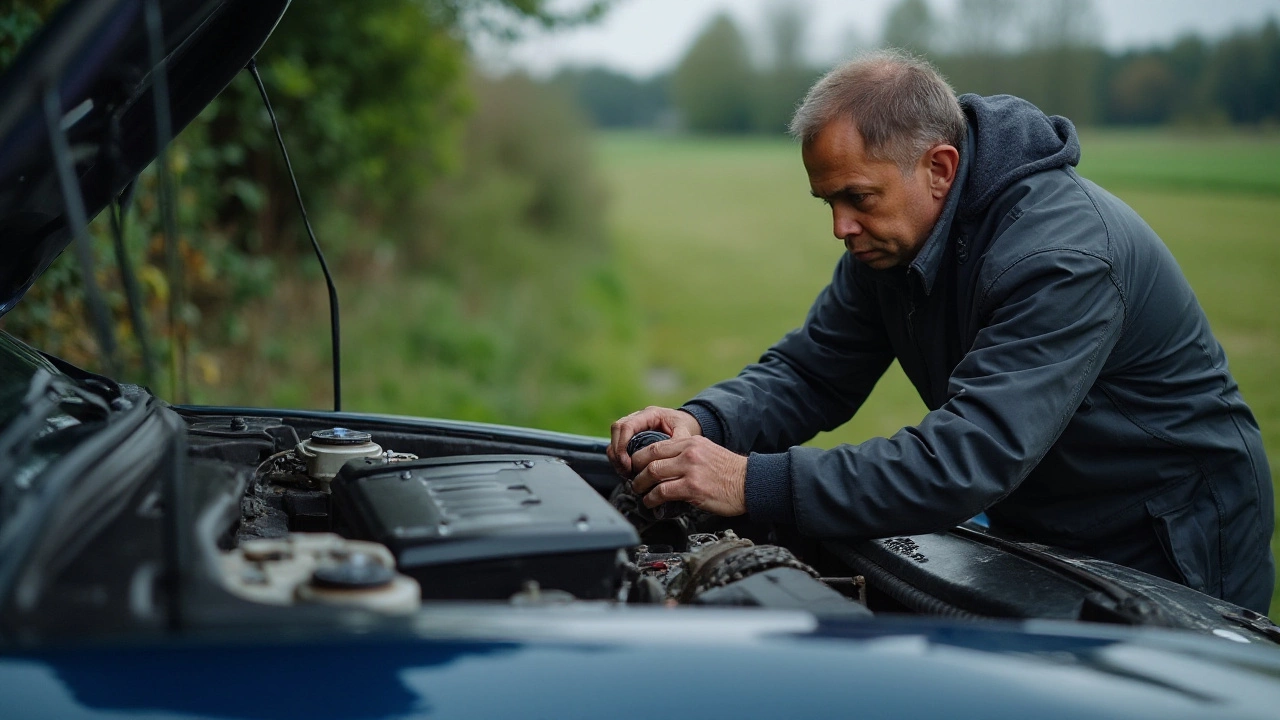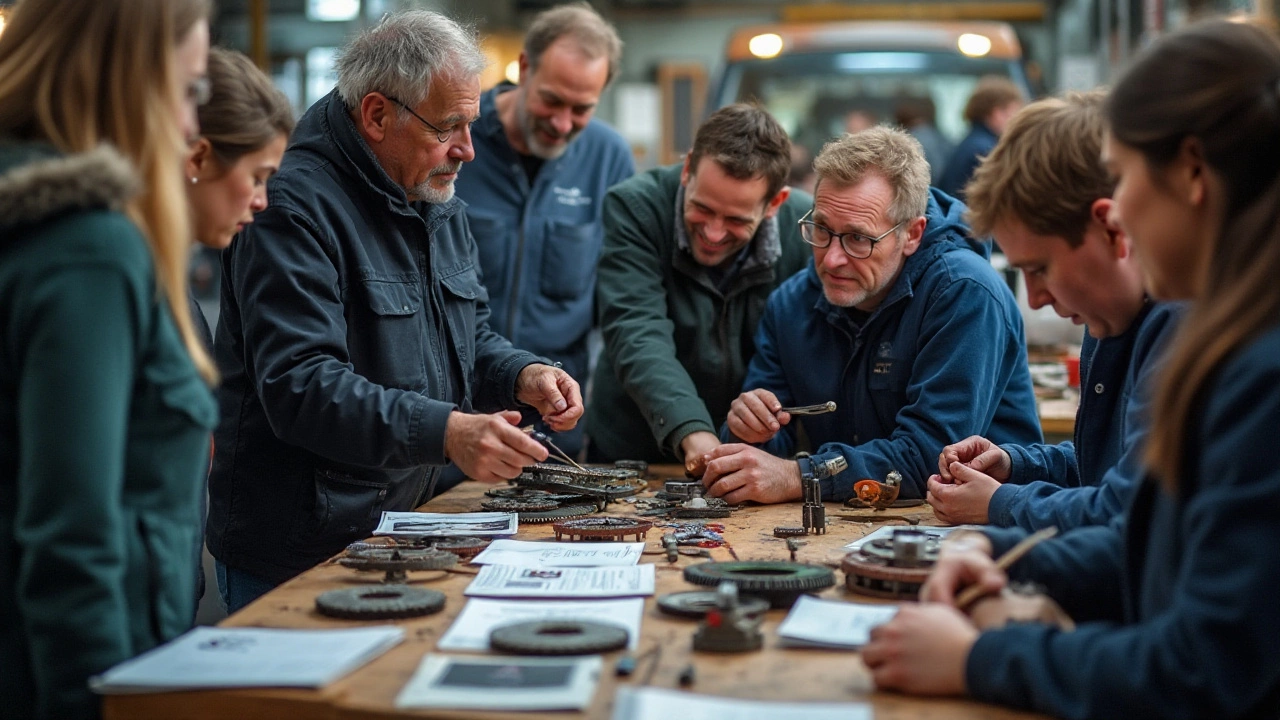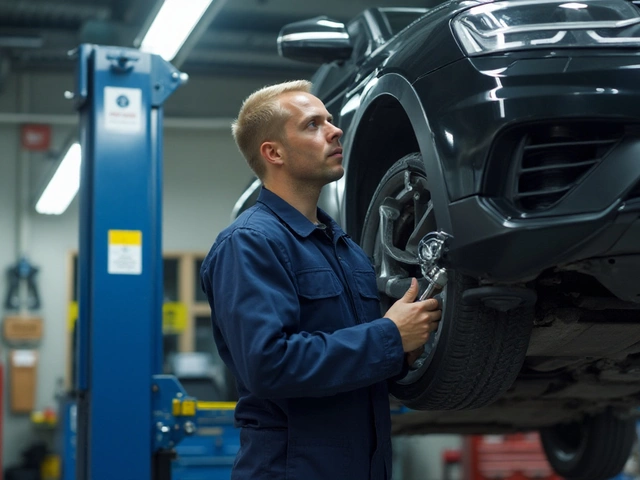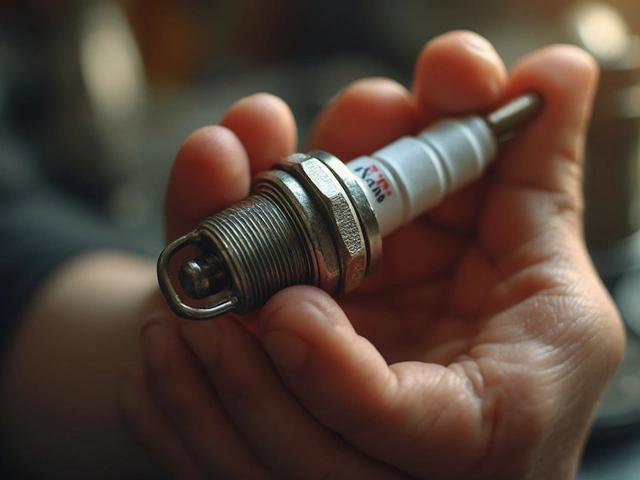When it comes to keeping your vehicle in top shape, understanding how to test a clutch is an essential skill. A clutch serves as a pivotal component in the transmission system, allowing you to shift gears smoothly and control your vehicle effectively. However, like all mechanical parts, it can wear out over time.
Identifying the need for a clutch test can save you from unexpected breakdowns and costly repairs. With a keen ear and a few simple tests, you can diagnose potential issues before they escalate. Whether it's noticing a change in gear performance or hearing unusual sounds, being aware of the early signs can make a world of difference.
This guide will walk you through the process of clutch testing, highlighting key tools you'll need and offering practical tips to prolong its lifespan. By the end, you'll have the knowledge needed to ensure your clutch remains in optimal condition.
- Understanding the Clutch System
- Signs Your Clutch Needs Testing
- Step-by-Step Clutch Testing Guide
- Tools and Equipment Needed
- Tips for Maintaining a Healthy Clutch
Understanding the Clutch System
The clutch is one of the unsung heroes of the automotive world, playing a critical role in making sure your drives are as smooth as possible. At its core, the clutch is responsible for connecting and disconnecting the engine from the transmission, allowing you to change gears seamlessly. When you press the clutch pedal, you're effectively telling the engine to stop sending power to the wheels for a moment, so the gears can shift without any unwanted friction or grinding.
Components of a clutch system include the clutch disk, pressure plate, flywheel, and release bearing. Each part has its job in ensuring efficient power transfer from the engine to the wheels. The clutch disk is usually made of a friction material, much like a brake pad, providing the ‘grab’ necessary to control the transfer of force. The pressure plate keeps the clutch disk pressed tightly to the flywheel, hence maintaining the engine's connection to the transmission when needed.
An interesting fact about clutch systems is that even though they have a life expectancy ranging from 30,000 to 100,000 miles—depending on driving habits and conditions—they do not wear out evenly. Drivers who prefer city driving with lots of stopping and starting, along with individuals who often carry heavy loads, might find their clutch wearing out faster.
"The life of a clutch is directly related to the lifecycle of its components," says Oliver Bentley, a renowned automotive engineer.
For those curious about the specifics, the pressure plate usually has a release mechanism. It's often either a diaphragm spring or a set of coil springs. The former is more common in modern vehicles due to its simplicity and ability to exert even pressure. By stepping on the clutch pedal, the release bearing presses against the diaphragm spring, enabling the clutch to disengage. This intricate system operates with amazing precision considering the harsh conditions and constant use it endures.
While clutch systems used in manual transmissions are more complex, even automatic transmissions rely on torque converters that mimic the clutch's functions. Torque converters handle connected and disconnected states without requiring driver input, but the principles remain consistent. To maintain effectiveness, routine checks and maintenance of the clutch system are essential. Checking for signs of wear and unusual noises or vibrations can give early warnings and prevent most issues from advancing to more serious conditions. A regular inspection can help avoid a worn-out clutch suddenly giving out, leaving the driver in a potentially hazardous situation.
Signs Your Clutch Needs Testing
Identifying when a clutch needs testing isn't just for seasoned mechanics; it's a skill every vehicle owner should possess. A clutch is crucial in the mechanism of your vehicle, affecting gear shifts and the power transmitted to the wheels from the engine. Yet, unlike a flat tyre or a cracked windshield, the signs of clutch failure can be a little harder to spot, but they’re just as important. One of the most common indicators that your clutch might need some attention is a change in the way gears shift. If you notice that the gears grind or resist engagement, particularly when accelerating, it's time to investigate further. This might point to a worn-out pressure plate or a clutch disc that’s nearing the end of its life.
Another sign is when the clutch pedal feels differently underfoot. Pay attention if the clutch feels firmer or softer than usual, or if it requires pumping to work correctly. In many cases, a clutch pedal that bites too early or too late in its travel path can signal issues that may need addressing sooner rather than later. If you hear strange noises when you press down on the clutch, like a whirring or a grinding sound, don’t brush them off. These noises often indicate trouble with the clutch release bearing, which, if left unaddressed, might lead to more significant clutch repairs.
It's also not uncommon for a slipping clutch to manifest through the engine revving higher than usual without a corresponding increase in speed. This is another classic sign that action might be required. A simple test involves finding a safe, flat road, engaging the handbrake, and slowly releasing the clutch while giving the engine some gas. If the engine continues to race without the car moving, consider it a failing clutch sign. A slipping clutch can, over time, cause more stress on your vehicle’s engine and transmission system, which might mean bigger repair costs if ignored.
C.M. Green, a renowned automotive expert, once noted, "A clutch that slips today may well leave you stranded tomorrow. Swift diagnosis can save a ton of trouble down the road."
Furthermore, keep an eye on uncharacteristic vibrations or jitters in the clutch pedal and the car itself. Such shaking typically points to problems with the clutch disc or flywheel. If your car judders when you pull away in first gear, especially after your clutch has been fully released, it may indicate a need for a clutch test. These vibrations can create imbalanced wear and tear on related vehicle parts. Lastly, don't forget to monitor clutch fluid, if applicable, as low levels can affect the integrity of your clutch operation. Regular fluid checks can often preempt more significant clutch diagnostic tests.

Step-by-Step Clutch Testing Guide
The art of testing a clutch involves an insightful and systematic approach that even novice car enthusiasts can master. Testing your clutch can unveil underlying issues that might otherwise go unnoticed until they wreak havoc on your vehicle's transmission system. Begin by ensuring your car is on level ground and that the engine is off. This is not just a matter of safety but rather to ensure that any readings you take will be accurate and consistent. Next, locate the clutch pedal, which is one of the three pedals in manual vehicles, usually found on the far left. Pressing it should be smooth, with an even resistance throughout the depression and release.
Once you've familiarized yourself with the pedal's mechanics, turn on the vehicle and begin listening for unusual sounds. An acute ear can often detect squeaking, grinding, or metallic noises signaling that your clutch is in distress. It may be beneficial here to enlist the help of a friend or use recording equipment to isolate any sounds that may not be easily identified in a bustling garage environment. Make note of any vibrations, as these could indicate a worn-out clutch disc or issues with the flywheel. A known fact in the industry is that a healthy clutch should allow the engine to idle noise-free.
Next, perform a stationary test, engaging the emergency brake and starting the engine; place the gear shift into neutral. Gradually depress the clutch pedal and shift into first gear. If you notice a heavy vibration while the engine idles, there's a likelihood of a clutch problem. Once engaged, lightly release the clutch until you feel the onset of the car's movement, noting the pedal's positioning known as the bite point. A bite point too close to the floorboard or too high is a tell-tale sign of adjustment necessity or potential wear.
An additional practical test involves a simple drive. On a flat road, slowly release the clutch pedal while the vehicle remains in gear at a low speed. A delayed engine response or unusual rev sound often suggests a slipping clutch, which is a common wear sign. A slipping clutch not only can affect fuel efficiency but more critically, it jeopardizes the vehicle's performance. If diagnosed early, fixing this issue can be relatively straightforward, avoiding the need for a full clutch kit replacement. According to automotive expert John Haines, "A slipping clutch is what usually leads to the deterioration of engine health over prolonged periods."
Lastly, don't overlook the importance of visually inspecting accessible components when possible. With appropriate caution, examine the clutch fluid reservoir, ensuring it's at the right level and untainted. Dirty or low fluid levels could indicate leaks or excessive internal wear. By developing a habit of conducting these tests regularly and being keen on vehicle maintenance, you empower yourself with the knowledge to not just fix but to preempt mechanical failures. This comprehensive approach not only safeguards the longevity of your clutch system but also significantly contributes to a safe and enjoyable driving experience.
Tools and Equipment Needed
Testing a clutch isn't something that requires an arsenal of fancy gadgets, but having the right tools at your disposal can make a world of difference. First off, you'll want a trusty flashlight. A quality flashlight illuminates those hard-to-see spots under the hood, particularly useful when inspecting the linkage and pedal action. A medium-sized set of screwdrivers, both flathead and Phillips, is a staple in any mechanic's kit, allowing you to adjust or remove components of the clutch system with ease.
An adjustable wrench is another must-have; it is versatile enough to tackle bolts and nuts of various sizes. For those who like a precise touch, a torque wrench can be invaluable to ensure bolts are tightened to manufacturer specifications without causing damage. Another crucial tool is a stethoscope or a mechanic's listening device. Listening to the subtle sounds that come as the clutch engages and disengages could reveal a lot about its health.
"The right tools not only make the job easier, they can prevent you from unintentionally causing damage," explains Jane Smith, a well-regarded auto repair expert. "Investing in quality equipment pays off in less wear and tear on the components of your vehicle."
While you might not need it for all testing, having a floor jack and a pair of jack stands is never a bad idea. These tools are crucial if you need to get a closer look underneath your car, ensuring that stability and safety are maintained during inspections. Also, consider having a notepad and a pen handy. They sound straightforward, but jotting down notes about unusual sounds or changes in pedal pressure can be quite helpful later when diagnosing issues.
A digital multimeter can be useful for checking any electrical connections related to the clutch, especially in modern vehicles equipped with advanced features. If local suppliers offer tool rental services, it might be wise to take advantage, particularly for tools you don’t use regularly. Last but certainly not least, a clutch testing manual specific to your vehicle's make and model serves as an indispensable resource, offering manufacturer-approved guidelines that you can follow for effective DIY testing.

Tips for Maintaining a Healthy Clutch
The health of your clutch is vital for ensuring smooth driving and preserving your vehicle's efficiency. To maintain a healthy clutch, it’s essential to develop habits that minimize wear and tear. One of the simplest yet most impactful steps is to avoid riding the clutch pedal. This common practice involves keeping pressure on the pedal unnecessarily, even when there’s no need to change gears. Such habits can prematurely wear out clutch components, leading to costly repairs and replacements. Instead, try to fully release the clutch when driving at a steady speed.
Another key practice is being mindful during gear shifts. Engaging your clutch gently as you shift gears plays a crucial role in reducing unnecessary stress on the clutch kit. It's a matter of balancing the pedals to ensure there's no jerky movement, which can easily damage the system. Awareness and practice can make gear shifts smoother, contributing to your clutch's longevity. Regular maintenance checks also play a part. Having your clutch systems inspected by professionals ensures that any signs of wear are detected early.
It’s also worth considering the impact of the driving environment on your clutch. Driving in heavy traffic often requires frequent stopping and starting, which is tough on a clutch. Whenever possible, avoid rush-hour traffic or opt for smoother routes. In doing so, you’re not only saving on fuel but also on the wear of critical vehicle components. Keep in mind that modern cruising controls can help maintain a steady pace without unnecessary pressing of the pedals.
“Your car takes care of you on the road, but maintaining it is a partnership,” says automotive expert James Matthews. “Simple mindfulness during driving can significantly extend the lifespan of your clutch.”
Let’s not forget about the importance of using the right products and maintaining your vehicle with high-quality fluids. Proper lubrication ensures that the clutch system and other transmission parts function smoothly without unnecessary friction. Consult your vehicle's manual or a trusted mechanic to determine the best maintenance schedule and products suited to your car model. These small yet significant steps can greatly impact the health of your clutch and the performance of your car.




